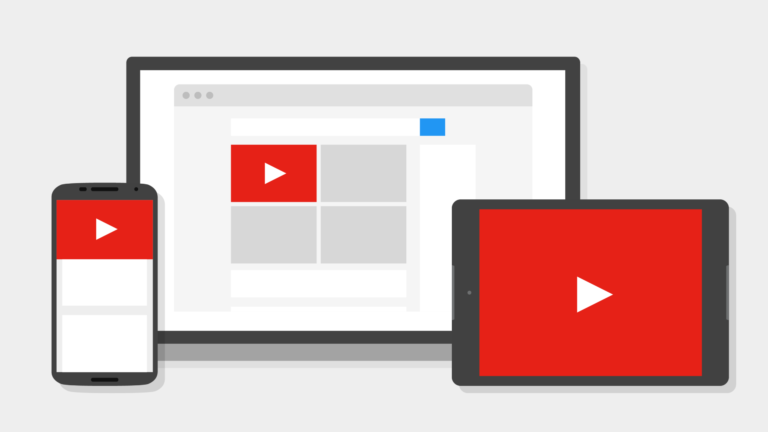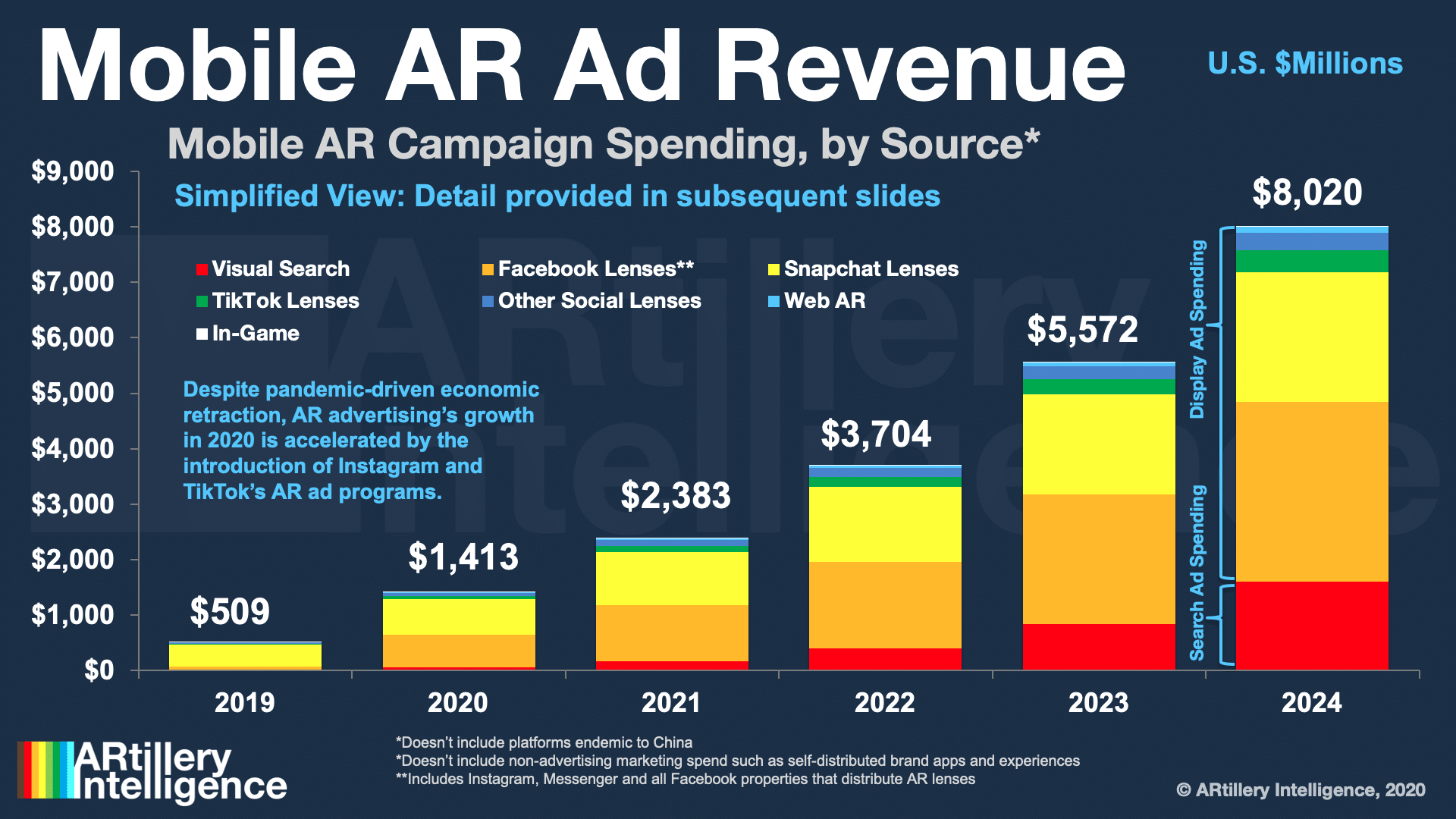
AR continues to evolve and take shape as an industry. Prominent sectors include industrial AR, social, gaming, and shopping. But existing alongside them is AR advertising. This includes paid/sponsored AR lenses that let consumers visualize products on “spaces & faces.”
Advertising is one of the most lucrative AR subsectors, estimated to reach $1.41 billion last year and $8.02 billion by 2024. These figures measure the money spent on sponsored AR experiences with paid distribution on networks like Facebook and Snapchat.
As our research arm ARtillery Intelligence examined in a recent report on AR advertising, adoption drivers include brand advertisers’ growing affinity for AR. Its ability to demonstrate products in 3D resonates with their creative sensibilities, transcending common 2D formats.
To continue the narrative and “show rather than tell,” part II of that report features case studies that map to various stages of the consumer purchase funnel. What do AR ads look like today, what’s the concrete ROI, and what are strategic takeaways for campaign execution?

Detailed Visualization
After case studies that focused on upper-funnel AR ad campaigns, we now continue to the mid-funnel. These campaign strategies include AR-based games, experiences that link to a product page, experiences that drive high “dwell-times”, or other indicators of consumer engagement.
Our next case study that hit these marks comes from MAC. In fact, cosmetics has become one of the most popular AR “try-before-you-buy” categories. This is driven by the fact that cosmetics require a great deal of detailed visualization that AR can provide, including color shades.
YouTube has leaned into this, offering AR try-ons that are launched from how-to videos about applying lipstick. Sponsored by cosmetics giant MAC, a call to action was offered during these videos to activate the front-facing camera and virtually try on various shades.
And the result? YouTube reported a 30 percent AR activation rate. This means that 30 percent of users that viewed these videos took the next step of trying on lipstick shades using AR. This far exceeds benchmarks for video advertising click-through-rates, which are about 1.84 percent.

Orbiting Bodies
Besides AR’s efficacy, the other lesson here is broadening its channels. AR-driven commerce started with branded apps like IKEA Place, then higher-distribution branded lenses from social giants. Now we’re seeing alternate routes like games, messaging and even email.
YouTube could be a powerful addition to that list given its massive reach. It also offers a good fit for AR, given that it’s already conditioned the user behavior around product demos and how-to videos. AR is a logical extension and will especially shine in areas like cosmetics and apparel.
AR product visualization in these channels will continue to be driven by user appeal – especially during Covid-era retail lockdowns. But another driver will be self-motivated investment from influential tech giants like Google, as it takes steps to future-proof its advertising businesses.
In that sense, YouTube joins many orbiting bodies in Google’s spatial play. Though it stepped away from VR, its AR efforts are going strong. That includes Visual Search (Google Lens) and AR in search results (Swirl). These efforts should have a meaningful role in accelerating AR.

